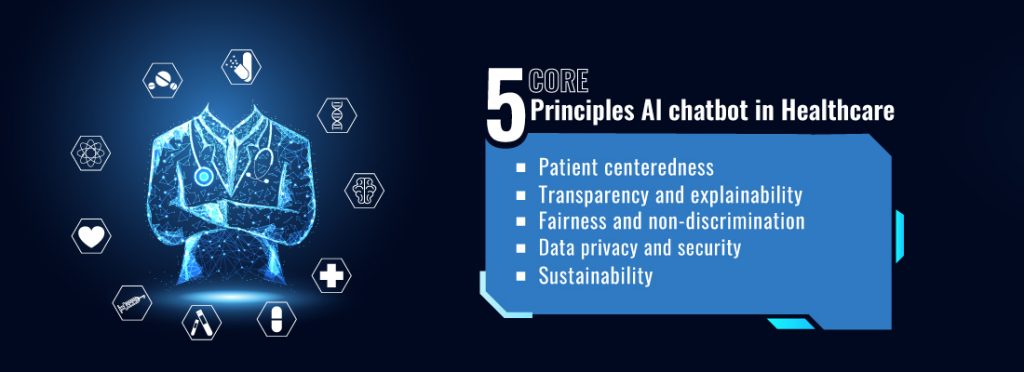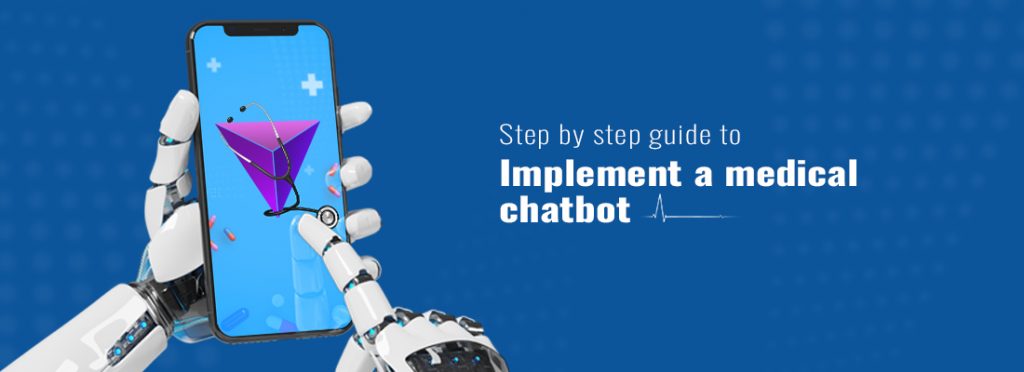In today’s modern technological era, chatbots have emerged as helpful tools in healthcare settings.
Medical chatbots are AI-powered programs created to offer users accurate medical data, assistance, and support through conversational interactions.
These chatbots can comprehend customer inquiries, gather pertinent data, and produce suitable responses by utilizing natural language processing (NLP) techniques.
So let’s explore the fascinating world of medical chatbots and see how these sophisticated virtual assistants are changing how we access and use healthcare services.
Read: Top Use-Cases Of Healthcare Voicebot

Define the Purpose and Scope
● Determine the medical chatbot’s precise objectives and purposes: Clearly specify the goals you have for the chatbot. It might be created to help users with symptom assessment, general health education, prescription reminders, or appointment scheduling, for instance.
● Determine the target group’s requirements: Recognise the chatbot’s intended users and their unique needs. Take into account things like your age, linguistic ability, and technical knowledge. This data will direct the chatbot’s functionality and design.
Read: The Cost Of A Chatbot Development
Gather Medical Knowledge and Data
● Obtain and assemble pertinent medical knowledge and information: Collect data from reliable sources such as clinical guidelines, academic articles, medical textbooks, and recognized healthcare websites. Make sure the data is correct, up to date, and supported by proof.
● Validate the information: Consult healthcare providers or subject matter experts to confirm the precision and reliability of the gathered data. They can aid in spotting any potential biases, contradictions, or out-of-date data.
Design the Conversation Flow
● Make a flow for the conversation: Create the conversation’s structure and flow between the user and the chatbot. Consider both human inquiries and system-generated prompts when deciding the kinds of questions and answers the chatbot will handle.
● Think about various circumstances and possible user inputs: Consider a variety of user inputs, such as differences in language, phrasing, and depth of detail. Define the chatbot’s reactions to each situation, including the right clarification queries or error handling.
Decide on a development platform.
● Choose an appropriate platform or framework for the chatbot’s design: Analyse the possibilities based on your needs, level of technical expertise, and spending capacity. Some well-liked frameworks and platforms for creating custom chatbots and web applications using Python or Node.js.
● Consider the following NLP (natural language processing) abilities: Make sure the framework or platform you choose has strong NLP capabilities to comprehend user queries, handle context, and produce suitable responses.
● Evaluate integration possibilities: Ascertain whether the platform enables integration with any additional systems or APIs that may be required, such as appointment scheduling software, electronic health records, or external medical databases.
Create and educate the chatbot
● Implement the chatbot’s backend logic: Create the chatbot’s backend using the development platform or framework of your choice. Coding is required to process user queries, interpret them using NLP methods, and produce the proper responses.
● Utilise medical expertise and data to build the chatbot: Use the medical data and expertise acquired to train the chatbot. To comprehend user intentions, retrieve pertinent data, and produce precise responses, this often entails creating a machine learning model or employing pre-trained models.
● Implement additional features: Think about incorporating functions like entity identification, sentiment analysis, and context management. Entity recognition helps recognize medical terminology or other specialized entities in user input. Sentiment analysis helps comprehend user emotions or tone.
Develop and Test the Chatbot
● Conduct functional testing: Test the chatbot’s function by implementing user interactions and ensuring that it correctly comprehends user queries and offers accurate responses. Test many scenarios, taking into account typical questions, edge cases, and probable mistakes.
● Test the usability of a website: Participate actual users in the evaluation of the chatbot’s user experience by gathering their input. Identify any usability problems, unclear discourse, or potential enhancement areas. Take user comments into account to improve the chatbot’s usability and conversation flow.
Ensure Compliance and Security
● Comply to appropriate regulations: Depending upon the region you work in, ensure compliance with healthcare laws like HIPAA (in the United States) or GDPR (in the European Union). Take the appropriate steps to protect user data, including personal health information, privacy, and security.
● Secure data transmission: Establish secure communication protocols (like SSL/TLS) to encrypt data transmitted among the chatbot and users. This aids in preventing unauthorized access to or interception of sensitive information.
● Create proper access restrictions and user authentication procedures to make sure that only authorized users may access and utilize the chatbot. Control and observe user access to confidential information or features.
Monitor and deploy
● Deploy the chatbot: Install the chatbot on the desired framework or channels, including a website, mobile application, or messaging platforms. Make sure the deployment environment is set up correctly and is able to manage the anticipated user load.
● Monitor usage and performance: Be sure to keep an eye on the chatbot’s usage, reaction times, and error rates. Examine usage data to discover user trends, popular searches, and areas for development.
● Updates and enhancements: The chatbot should periodically receive updates and upgrades based on performance tracking and user feedback. Fix any flaws, correct any errors, and add any new medical information or recommendations as they become available.

FAQs
Are medical chatbots precise and trustworthy?
The level and accuracy of the medical information and data used to train a chatbot in medicine determine its accuracy and dependability. The training data for the chatbot must be from reliable sources and updated frequently to reflect the most recent medical findings and recommendations. During the development phase, working with medical specialists or subject matter experts can help assure accuracy.
Can a medical chatbot make medical diagnoses or take the place of doctors?
No, a medical chatbot shouldn’t be utilized to make medical diagnoses or take the place of qualified medical personnel. Medical chatbots can schedule appointments, perform initial symptom evaluations, and provide general medical information. They are not a replacement for qualified medical guidance, diagnosis, or care. For individualized medical advice, users should always consult with licensed healthcare professionals.
Final thoughts
In conclusion, the use of medical chatbots offers intriguing prospects to improve patient engagement, increase healthcare accessibility, and streamline the delivery of support and information to patients.
Medical chatbots have the ability to fundamentally change the healthcare industry by approaching their creation with a dedication to accuracy, user-centric design, security, and continuous improvement.
This would eventually benefit both patients and healthcare professionals.
Read More: The Future Trend of Chatbots in Healthcare







